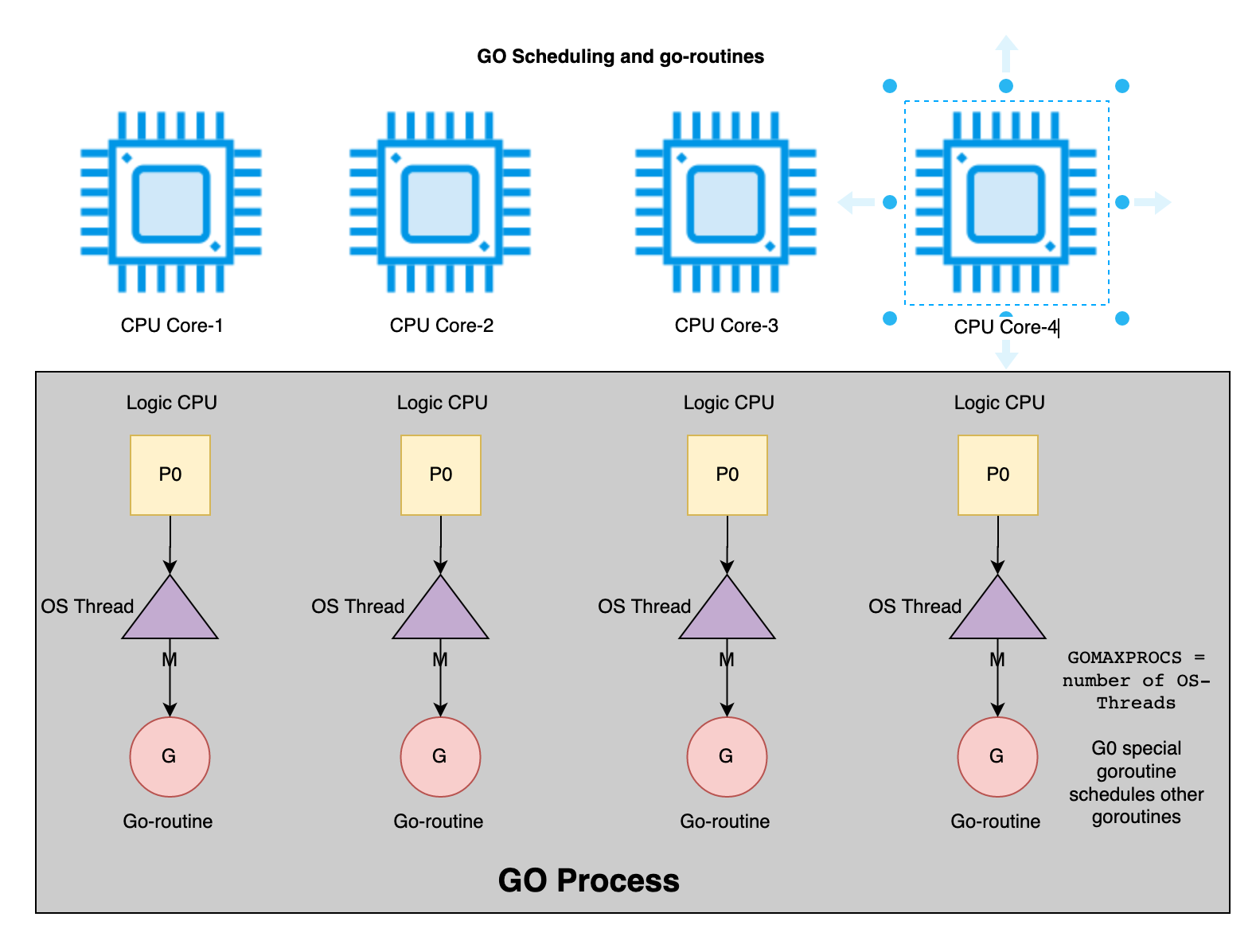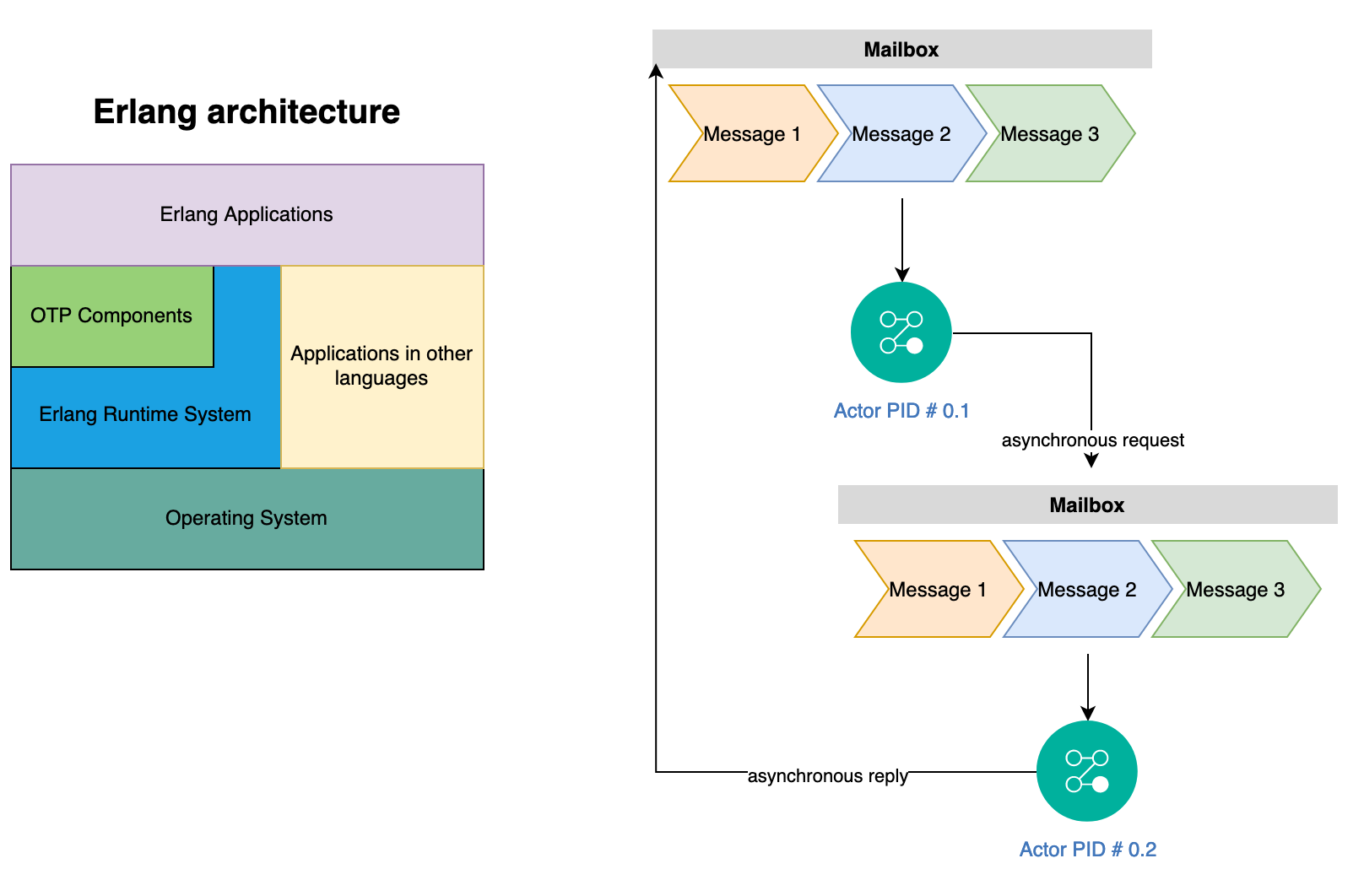Patterns are typical solutions to common problems in various phases of the software development lifecycle and you may find many books and resources on various types of patterns such as:
- Analysis patterns
- Design patterns
- Integration patterns
- Architecture, API, Cloud and other kind of patterns
However, you may also find low-level implementation patterns that developers often apply to common coding problems. Following are a few of these coding patterns that I have found particularly fascinating and pragmatic in my experience:
Functional Options Pattern
The options pattern is used to pass configuration options to a method, e.g. you can pass a struct that holds configuration settings. These configuration properties may have default values that are used when they are not explicitly defined. You may implement options patter using builder pattern to initialize config properties but it requires explicitly building the configuration options even when there is nothing to override. In addition, error handling with the builder pattern poses more complexity when chaining methods. The functional options pattern on the other hand defines each configuration option as a function (referenced in Functional Options in Go and 100 Go Mistakes and How to Avoid), which can validate the configuration option and return an error for invalid data. For example:
type options struct {
port *int
timeout *time.Duration
}
type Option func(opts *options) error
func WithPort(port int) Option {
return func(opts *options) error {
if port < 0 {
return errors.New("port shold be positive")
}
options.port = &port
return nil
}
}
func NewServer(addr string, opts ...Option) (*http.Server, error) {
var options options
for _, opt := range opts {
err := opt(&options)
if err != nl {
return nil, err
}
}
var port int
if options.port == nil {
port = defaultHTTPPort
} else {
if *options.port == 0 {
port = randomPort()
} else {
port = *options.port
}
}
...
}
You can then pass configuration options as follows:
server, err := NewServer( WithPort(8080), WithTimeout(time.Second) )
Above solution allows handling errors when overriding default values fails and passing empty list of options. In other languages where errors can be implicitly passed to the calling code may still use builder pattern for configuration such as:
const DefaultHttpPort: i32 = 8080;
#[derive(Debug, PartialEq)]
struct Options {
port: i32,
timeout: i32,
}
#[derive(Debug)]
pub enum OptionsError {
Validation(String),
}
struct OptionsBuilder {
port: Option<i32>,
timeout: Option<i32>,
}
impl OptionsBuilder {
fn new() -> Self {
OptionsBuilder {
port: Some(DefaultHttpPort),
timeout: Some(1000),
}
}
pub fn with_port(mut self, port: i32) -> Result<Self, OptionsError> {
if port < 0 {
return Err(OptionsError::Validation("port shold be positive".to_string()));
}
if port == 0 {
self.port = Some(randomPort());
} else {
self.port = Some(port);
}
Ok(self)
}
pub fn with_timeout(mut self, timeout: i32) -> Result<Self, OptionsError> {
if timeout <= 0 {
return Err(OptionsError::Validation("timeout shold be positive".to_string()));
}
self.timeout = Some(timeout);
Ok(self)
}
pub fn build(self) -> Options {
Options { port: self.port.unwrap(), timeout: self.port.unwrap() }
}
}
fn new_server(addr: &str, opts: Options) -> Result<Server, OptionsError> {
Ok(Server::new(addr, opts.port, opts.timeout))
}
fn main() -> Result<(), OptionsError> {
let _ = new_server("127.0.0.1", OptionsBuilder::new().build());
let _ = new_server("127.0.0.1", OptionsBuilder::new().with_port(8000)?.with_timeout(2000)?.build());
Ok(())
}However, above solution still requires building config options even when no properties are overridden.
State Pattern with Enum
The state pattern is part of GoF design patterns, which is used to implement finite-state machines or strategy pattern. The state pattern can be easily implemented using “sum” (alternative) algebraic data types with use of union or enums constructs. For example, here is an implementation of state pattern in Rust:
use std::{error::Error, fmt};
#[derive(Debug)]
struct JobError {
reason: String,
}
impl Error for JobError {}
impl fmt::Display for JobError {
fn fmt(&self, f: &mut fmt::Formatter) -> fmt::Result {
write!(f, "state error {}", self.reason)
}
}
enum JobState {
Pending { timeout: std::time::Duration },
Executing { percentage_completed: f32 },
Completed { completion_time: std::time::Duration },
Failed { cause: JobError },
}
struct JobStateMachine {
state: JobState,
}
impl JobStateMachine {
fn new(timeout: std::time::Duration) -> Self {
JobStateMachine {
state: JobState::Pending { timeout }
}
}
fn to_executing(&mut self) {
self.state = match self.state {
JobState::Pending { .. } => JobState::Executing { percentage_completed: 0.0 },
_ => panic!("Invalid state transition!"),
}
}
fn to_succeeded(&mut self, completion_time: std::time::Duration) {
self.state = match self.state {
JobState::Executing { .. } => JobState::Completed { completion_time: completion_time },
_ => panic!("Invalid state transition!"),
}
}
// ...
}
fn main() {
let mut job_state_machine = JobStateMachine::new(std::time::Duration::new(1000, 0));
job_state_machine.to_executing();
}However, above implementation relies on runtime to validate state transitions. Alternatively, you can use struct to check valid transitions at compile time, e.g.,
struct Pending {
timeout: std::time::Duration,
}
impl Pending {
fn new(timeout: std::time::Duration) -> Self {
Pending { timeout }
}
fn to_executing(self) -> Executing {
Executing::new()
}
}
struct Executing {
percentage_completed: f32,
}
impl Executing {
fn new() -> Self {
Executing { percentage_completed: 0.0 }
}
fn to_succeeded(self, completion_time: std::time::Duration) -> Executing {
Executing { percentage_completed: 0.0 }
}
}
struct Succeeded {
completion_time: std::time::Duration,
}
impl Succeeded {
fn new(completion_time: std::time::Duration) -> Self {
Succeeded { completion_time }
}
}
// ...
fn main() {
let pending = Pending::new(std::time::Duration::new(1000, 0));
let executing = pending.to_executing();
}Tail Recursion with Trampolines and Thunks
The recursion uses divide and conquer to solve complex problems where a function calls itself to break down a problem into smaller problems. However, each recursion requires adding stack frame to the call stack so many functional languages converts recursive implementation into an iterative solution by eliminating tail-call where recursive call is the final action of a function. In languages that don’t support tail-call optimization, you can use thunks and trampolines to implement it. A thunk is a no-argument function that is evaluated lazily, which in turn may produce another thunk for next function call. Trampolines define a Computation data structure to return result of a computation. For example, following code illustrates an implementation of a Trampoline in Rust:
trait FnThunk {
type Out;
fn call(self: Box<Self>) -> Self::Out;
}
pub struct Thunk<'a, T> {
fun: Box<dyn FnThunk<Out=T> + 'a>,
}
impl<T, F> FnThunk for F where F: FnOnce() -> T {
type Out = T;
fn call(self: Box<Self>) -> T { (*self)() }
}
impl<'a, T> Thunk<'a, T> {
pub fn new(fun: impl FnOnce() -> T + 'a) -> Self {
Self { fun: Box::new(fun) }
}
pub fn compute(self) -> T {
self.fun.call()
}
}
pub enum Computation<'a, T> {
Done(T),
Call(Thunk<'a, Computation<'a, T>>),
}
pub fn compute<T>(mut res: Computation<T>) -> T {
loop {
match res {
Computation::Done(x) => break x,
Computation::Call(thunk) => res = thunk.compute(),
}
}
}
fn factorial(n: u128) -> u128 {
fn fac_with_acc(n: u128, acc: u128) -> Computation<'static, u128> {
if n > 1 {
Computation::Call(Thunk::new(move || fac_with_acc(n-1, acc * n)))
} else {
Computation::Done(acc)
}
}
compute(fac_with_acc(n, 1))
}
fn main() {
println!("factorial result {}", factorial(5));
}Memoization
The memoization allows caching results of expensive function calls so that repeated invocation of the same function returns the cached results when the same input is used. It can be implemented using thunk pattern described above. For example, following implementation shows a Rust based implementation:
use std::borrow::Borrow;
use std::marker::PhantomData;
use std::ops::{Deref, DerefMut};
enum Memoized<I: 'static, O: Clone, Func: Fn(I) -> O> {
UnInitialized(PhantomData<&'static I>, Box<Func>),
Processed(O),
}
impl<I: 'static, O: Clone, Func: Fn(I) -> O> Memoized<I, O, Func> {
fn new(lambda: Func) -> Memoized<I, O, Func> {
Memoized::UnInitialized(PhantomData, Box::new(lambda))
}
fn fetch(&mut self, data: I) -> O {
let (flag, val) = match self {
&mut Memoized::Processed(ref x) => (false, x.clone()),
&mut Memoized::UnInitialized(_, ref z) => (true, z(data))
};
if flag {
*self = Memoized::Processed(val.clone());
}
val
}
fn is_initialized(&self) -> bool {
match self {
&Memoized::Processed(_) => true,
_ => false
}
}
}
impl<I: 'static, O: Clone, Func: Fn(I) -> O> Deref for Memoized<I, O, Func> {
type Target = O;
fn deref(&self) -> &Self::Target {
match self {
&Memoized::Processed(ref x) => x,
_ => panic!("Attempted to derefence uninitalized memoized value")
}
}
}
impl<I: 'static, O: Clone, Func: Fn(I) -> O> DerefMut for Memoized<I, O, Func> {
fn deref_mut(&mut self) -> &mut Self::Target {
//self.get()
if self.is_initialized() {
match self {
&mut Memoized::Processed(ref mut x) => return x,
_ => unreachable!()
};
} else {
*self = Memoized::Processed(unsafe { std::mem::zeroed() });
match self {
&mut Memoized::Processed(ref mut x) => return x,
_ => unreachable!()
};
}
}
}
impl<I: 'static, O: Clone, Func: Fn(I) -> O> Borrow<O> for Memoized<I, O, Func> {
fn borrow(&self) -> &O {
match self {
&Memoized::Processed(ref x) => x,
_ => panic!("Attempted to borrow uninitalized memoized value")
}
}
}
enum Memoized<I: 'static, O: Clone, Func: Fn(I) -> O> {
UnInitialized(PhantomData<&'static I>, Box<Func>),
Processed(O),
}
impl<I: 'static, O: Clone, Func: Fn(I) -> O> Memoized<I, O, Func> {
fn new(lambda: Func) -> Memoized<I, O, Func> {
Memoized::UnInitialized(PhantomData, Box::new(lambda))
}
fn fetch(&mut self, data: I) -> O {
let (flag, val) = match self {
&mut Memoized::Processed(ref x) => (false, x.clone()),
&mut Memoized::UnInitialized(_, ref z) => (true, z(data))
};
if flag {
*self = Memoized::Processed(val.clone());
}
val
}
fn is_initialized(&self) -> bool {
match self {
&Memoized::Processed(_) => true,
_ => false
}
}
}
impl<I: 'static, O: Clone, Func: Fn(I) -> O> Deref for Memoized<I, O, Func> {
type Target = O;
fn deref(&self) -> &Self::Target {
match self {
&Memoized::Processed(ref x) => x,
_ => panic!("Attempted to derefence uninitalized memoized value")
}
}
}
impl<I: 'static, O: Clone, Func: Fn(I) -> O> DerefMut for Memoized<I, O, Func> {
fn deref_mut(&mut self) -> &mut Self::Target {
//self.get()
if self.is_initialized() {
match self {
&mut Memoized::Processed(ref mut x) => return x,
_ => unreachable!()
};
} else {
*self = Memoized::Processed(unsafe { std::mem::zeroed() });
match self {
&mut Memoized::Processed(ref mut x) => return x,
_ => unreachable!()
};
}
}
}
impl<I: 'static, O: Clone, Func: Fn(I) -> O> Borrow<O> for Memoized<I, O, Func> {
fn borrow(&self) -> &O {
match self {
&Memoized::Processed(ref x) => x,
_ => panic!("Attempted to borrow uninitalized memoized value")
}
}
}
mod test {
use super::Memoized;
#[test]
fn test_memoized() {
let lambda = |x: i32| -> String {
x.to_string()
};
let mut dut = Memoized::new(lambda);
assert_eq!(dut.is_initialized(), false);
assert_eq!(&dut.fetch(5), "5");
assert_eq!(dut.is_initialized(), true);
assert_eq!(&dut.fetch(2000), "5");
let x: &str = &dut;
assert_eq!(x, "5");
}
}
Type Conversion
The type conversion allows converting an object from one type to another, e.g. following interface defined in Spring shows an example:
public interface Converter<S, T> {
@Nullable
T convert(S source);
default <U> Converter<S, U> andThen(Converter<? super T, ? extends U> after) {
Assert.notNull(after, "'after' Converter must not be null");
return (S s) -> {
T initialResult = convert(s);
return (initialResult != null ? after.convert(initialResult) : null);
};
}
}This kind of type conversion looks very similar to the map/reduce primitives defined in functional programming languages, e.g. Java 8 added Function interface for such as transformation. In addition, Scala also supports implicit conversion from one type to another, e.g.,
object Conversions: given fromStringToUser: Conversion[String, User] = (name: String) => User(name)
Rust also supports From and Into traits for converting types, e.g.,
use std::convert::From;
#[derive(Debug)]
struct Number {
value: i32,
}
impl From<i32> for Number {
fn from(item: i32) -> Self {
Number { value: item }
}
}
fn main() {
let num1: Number = Number::from(10);
let num2: Number = 20.into();
println!("{:?} {:?}", num1, num2);
}


